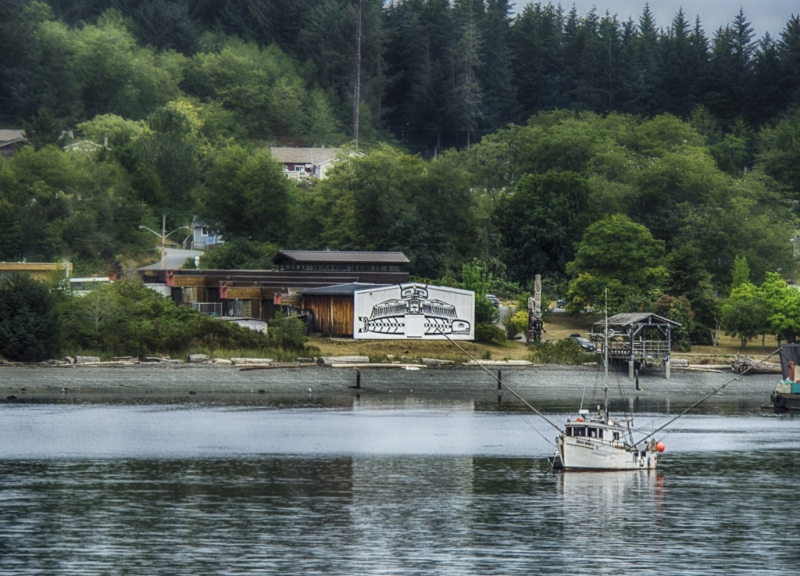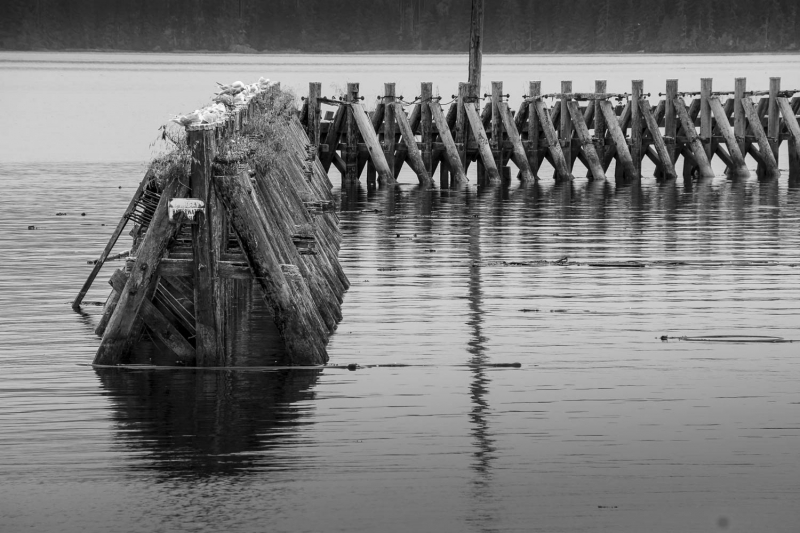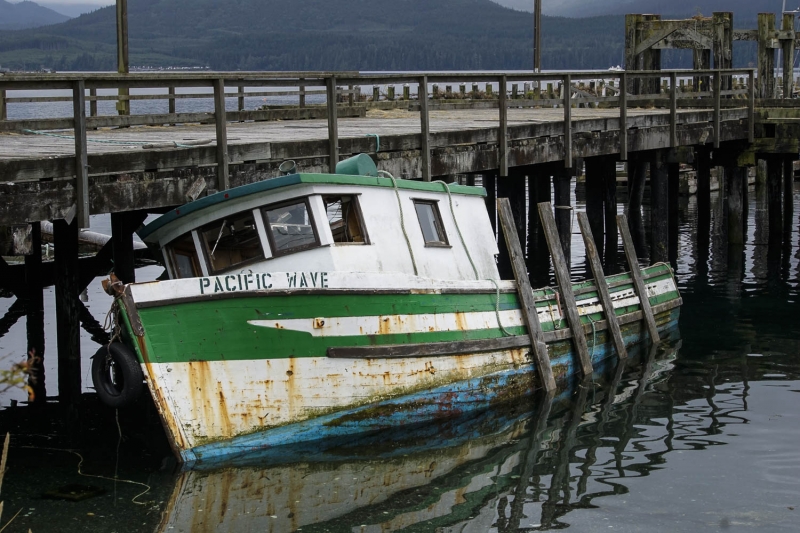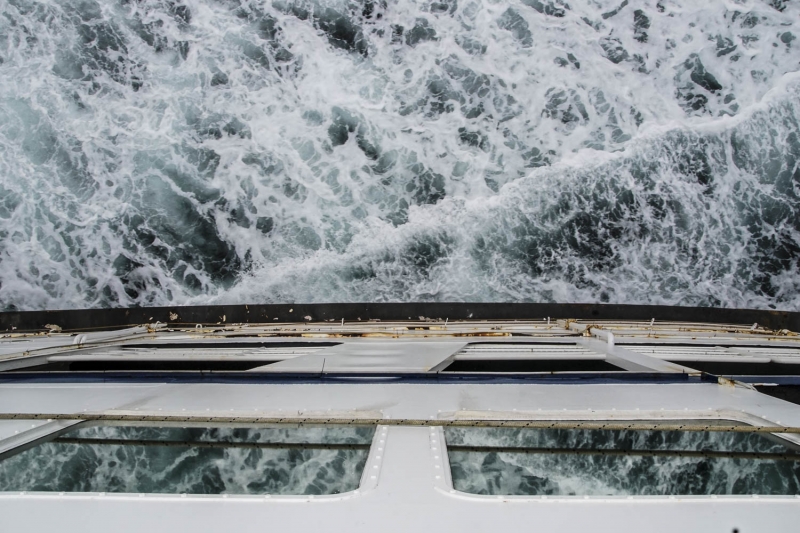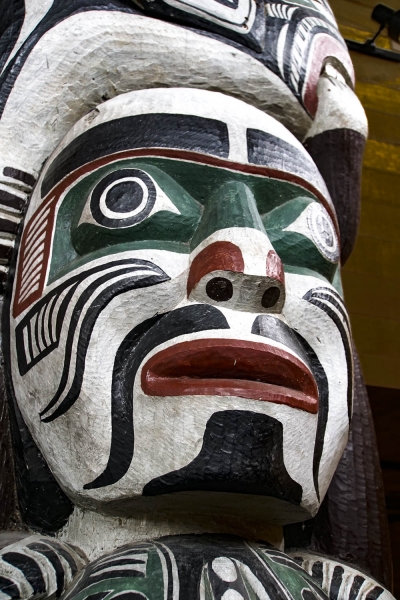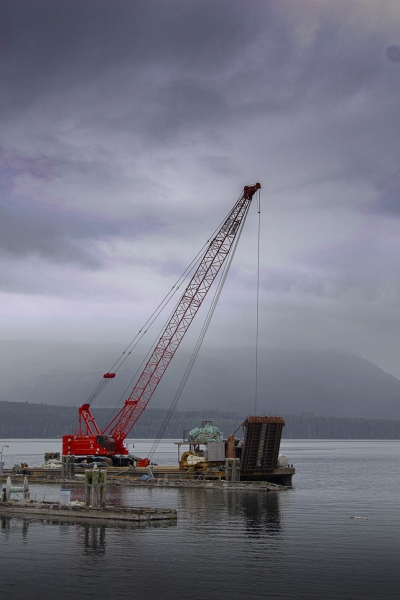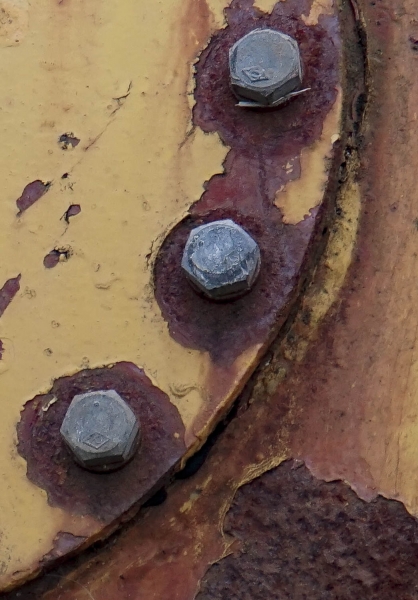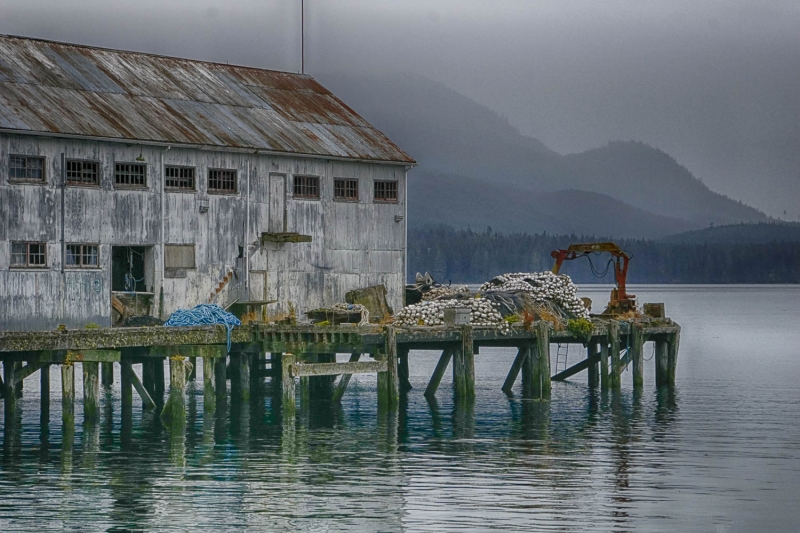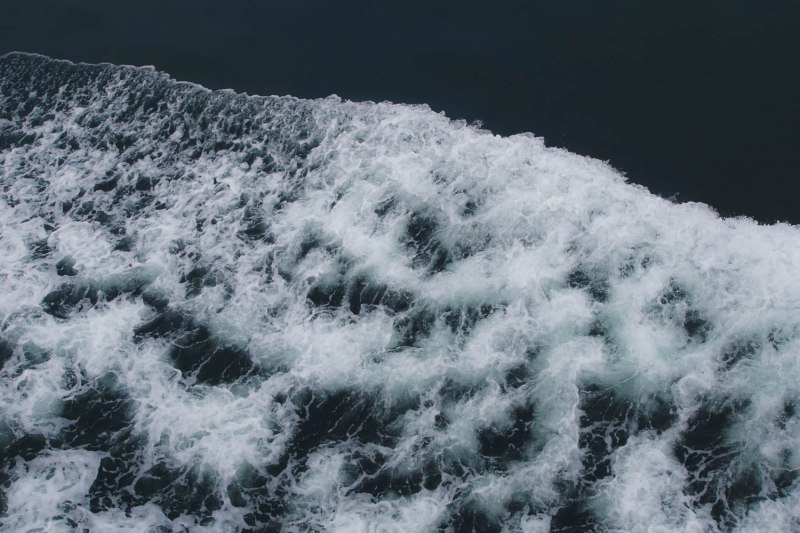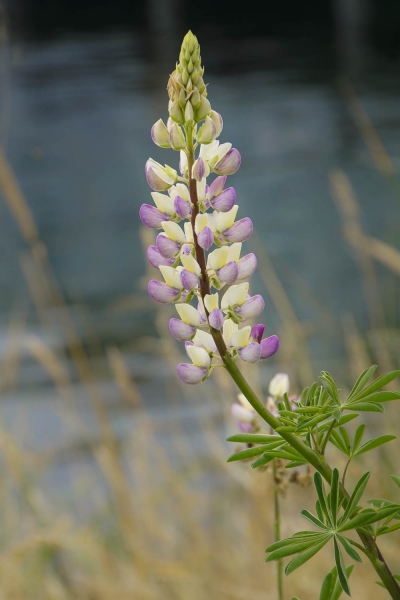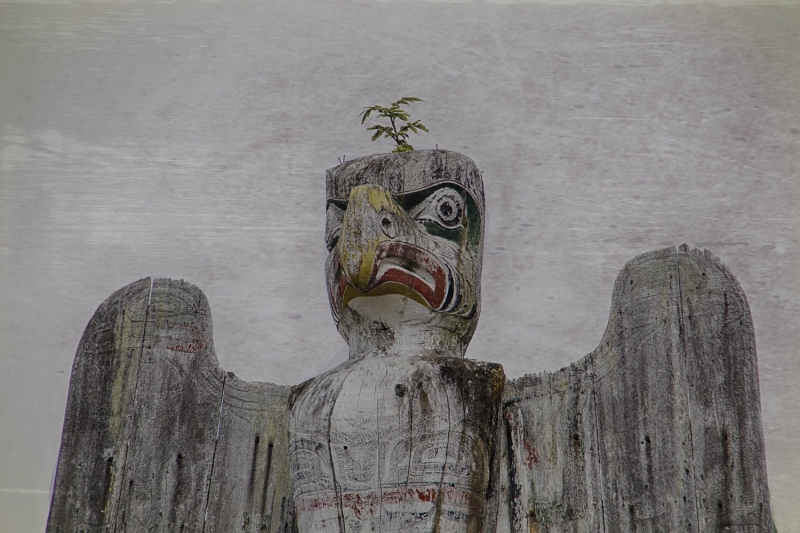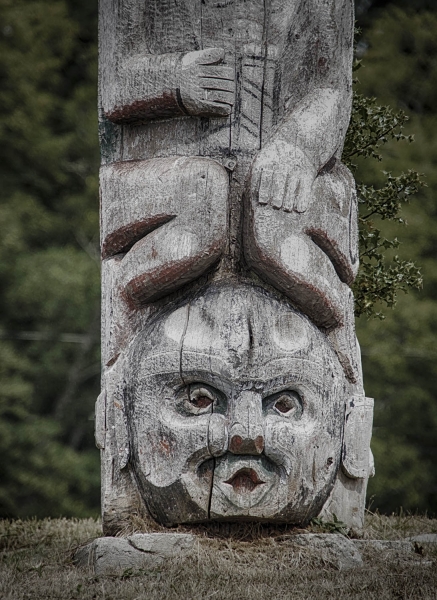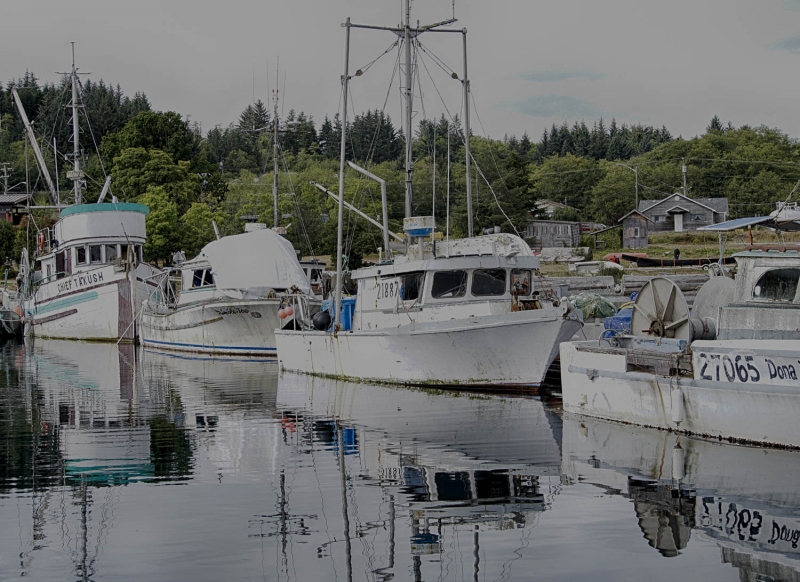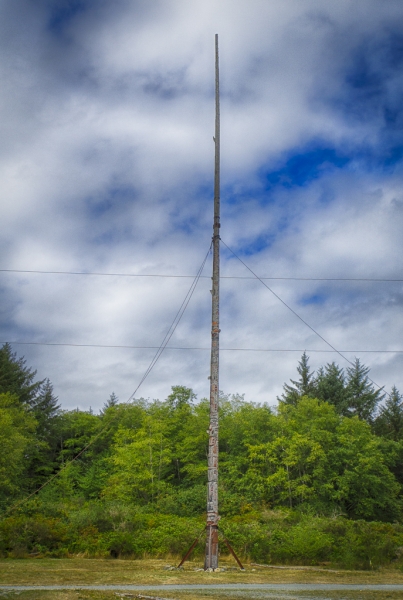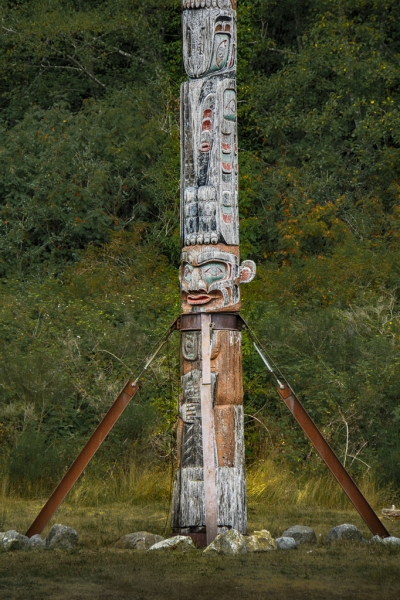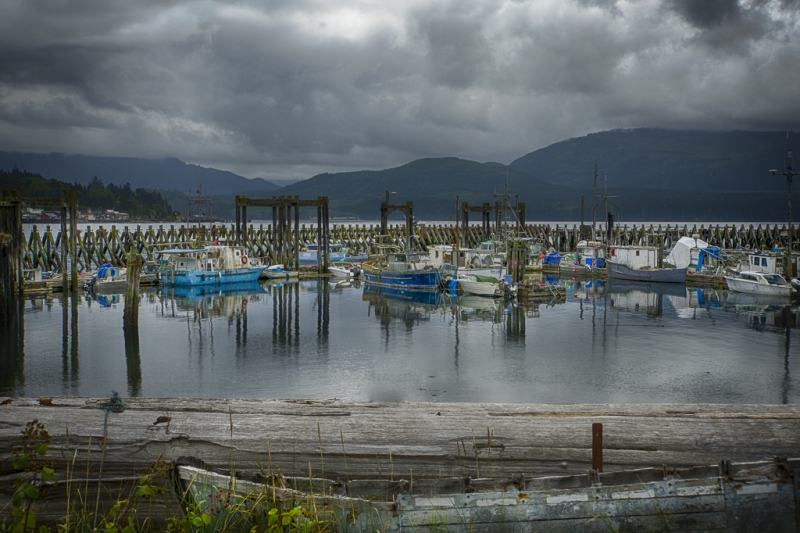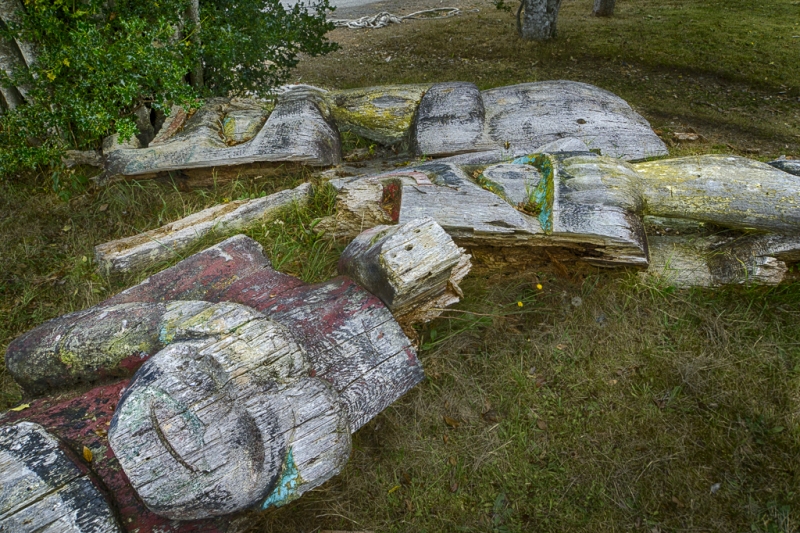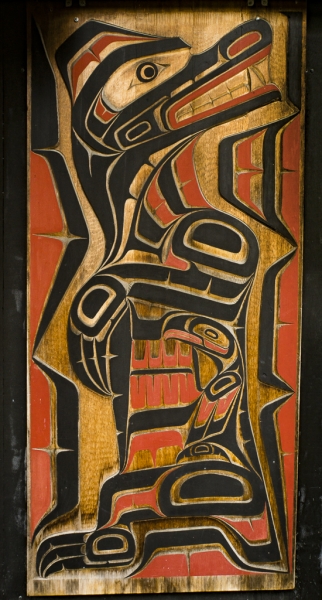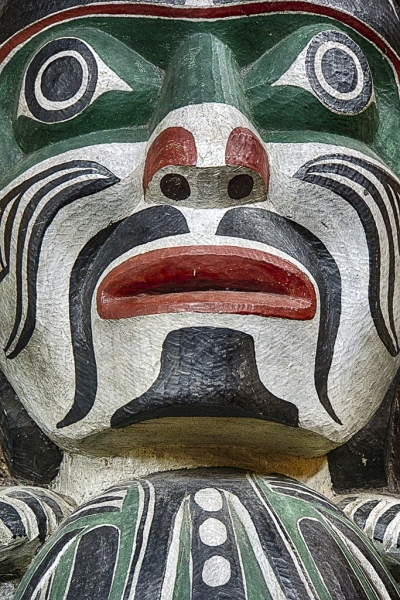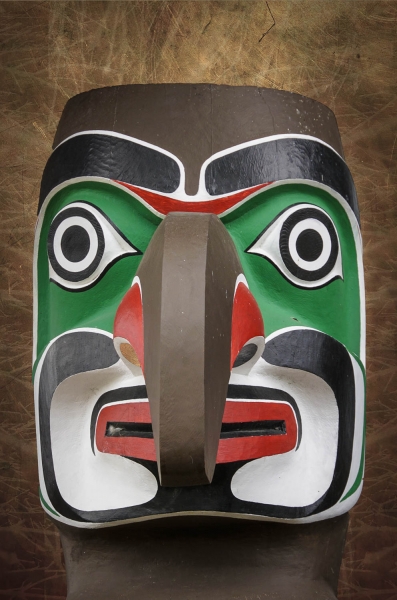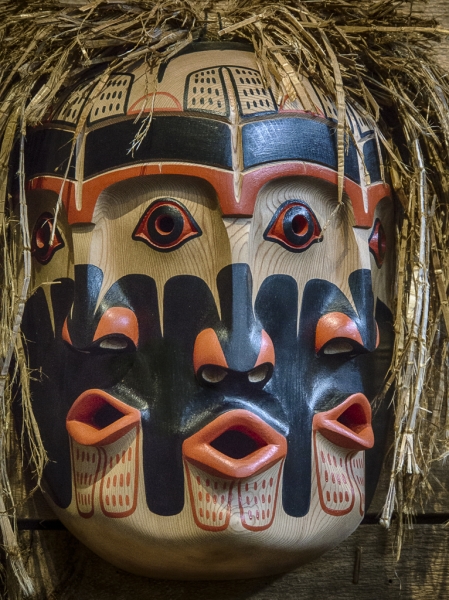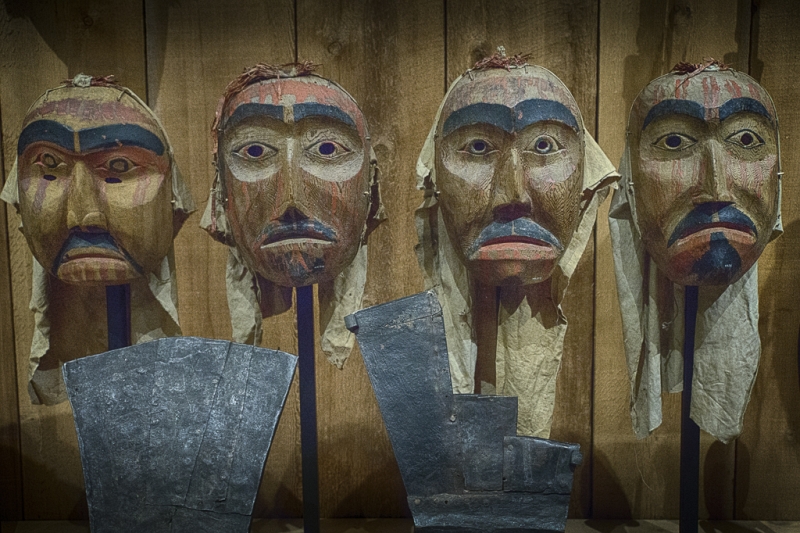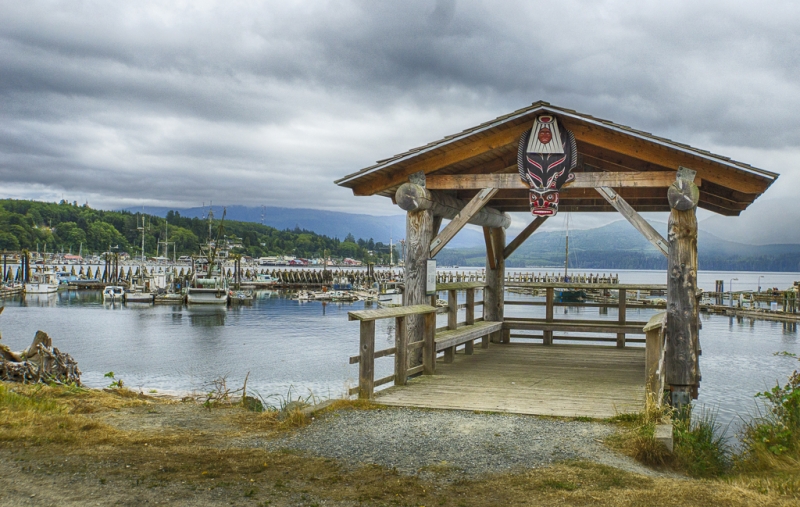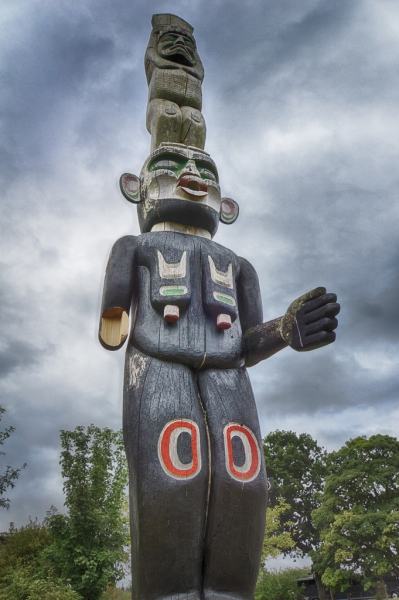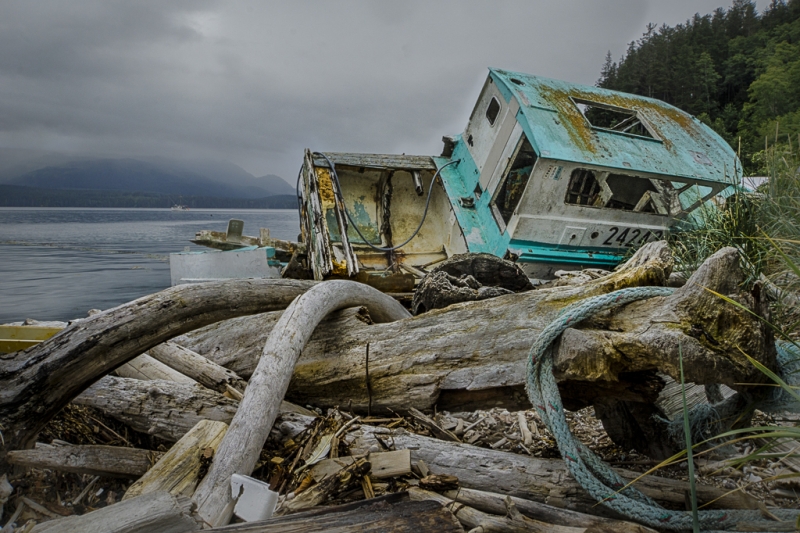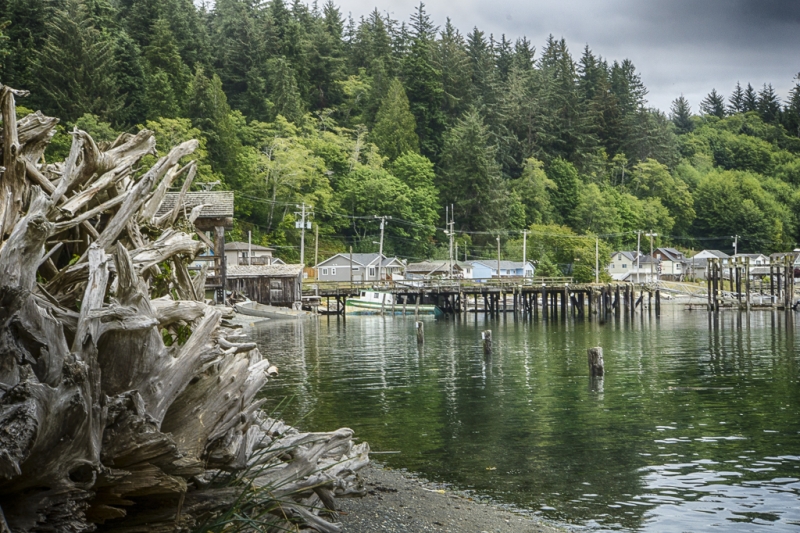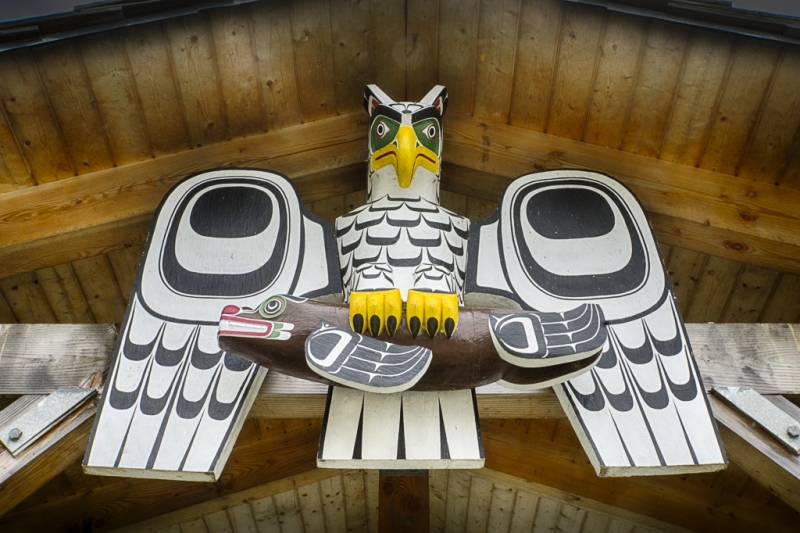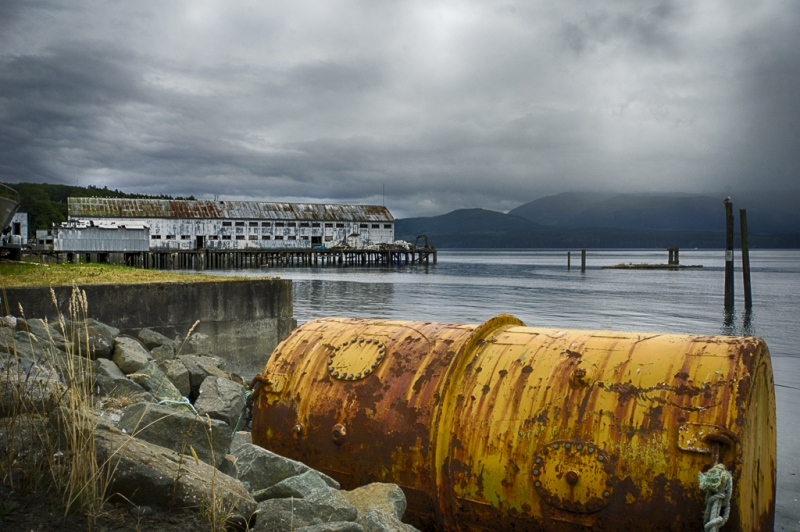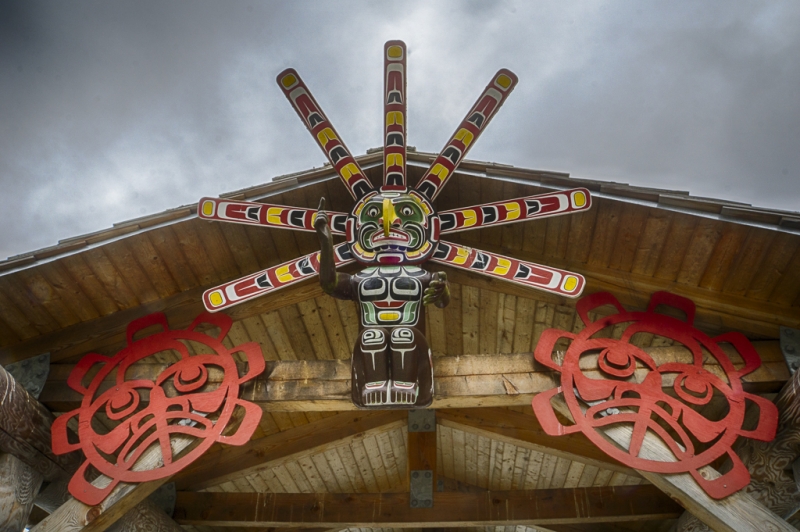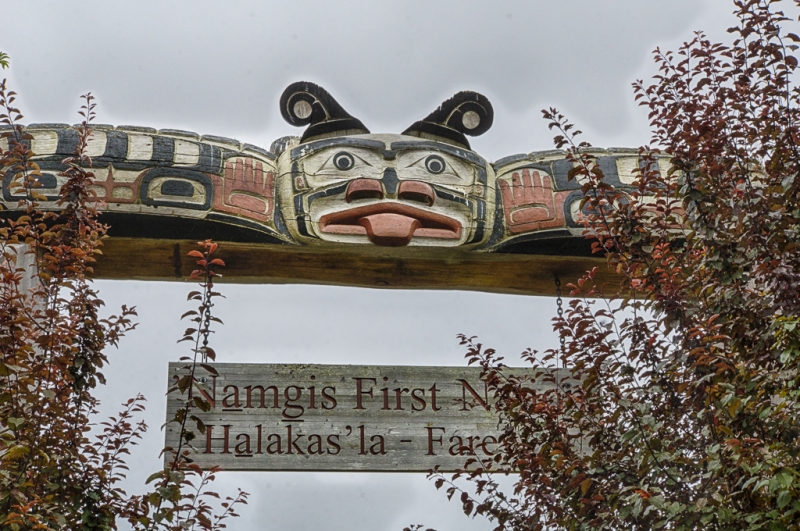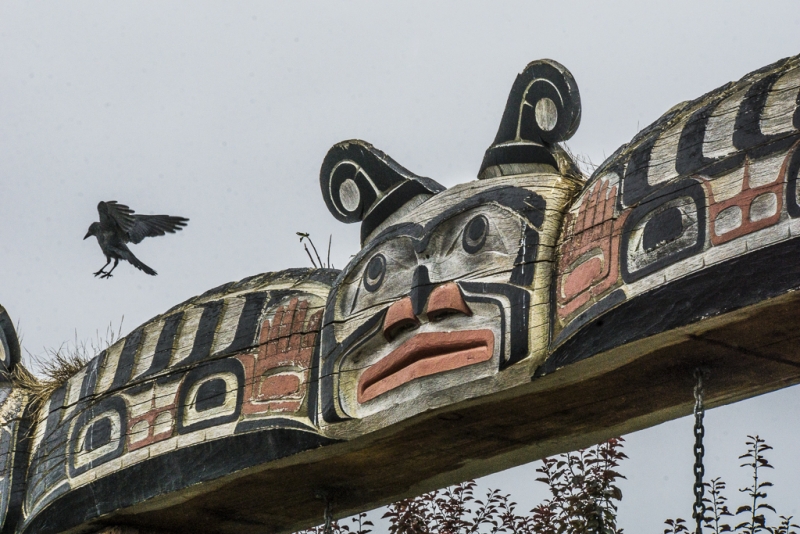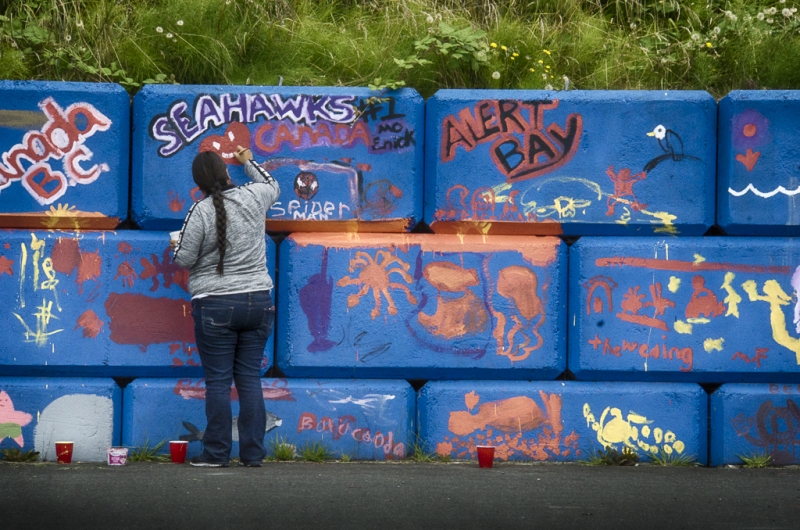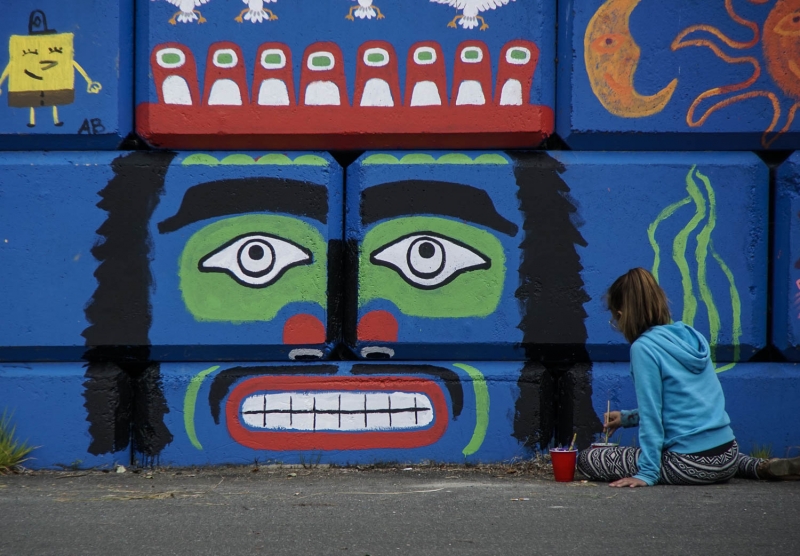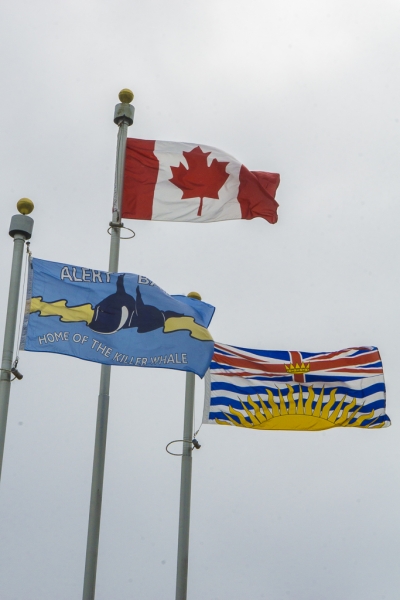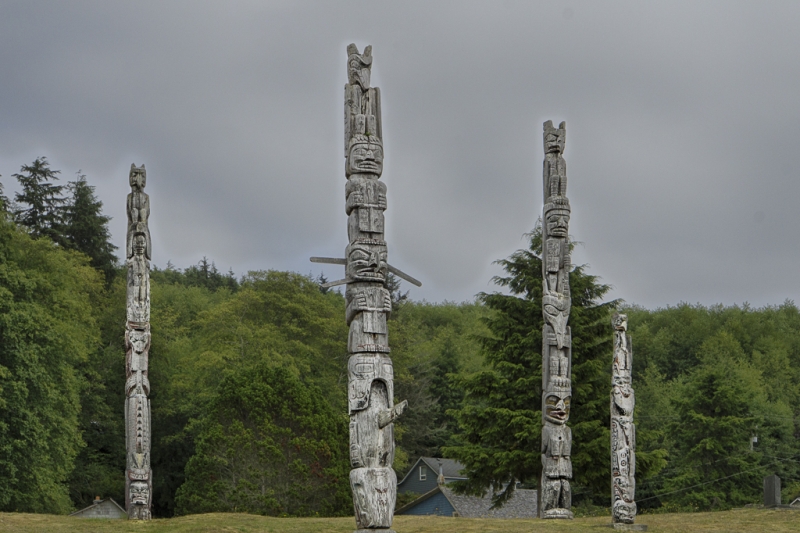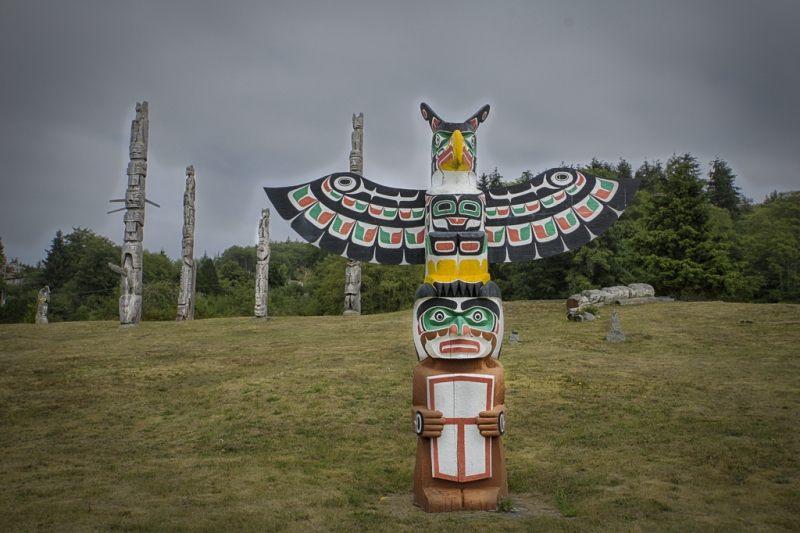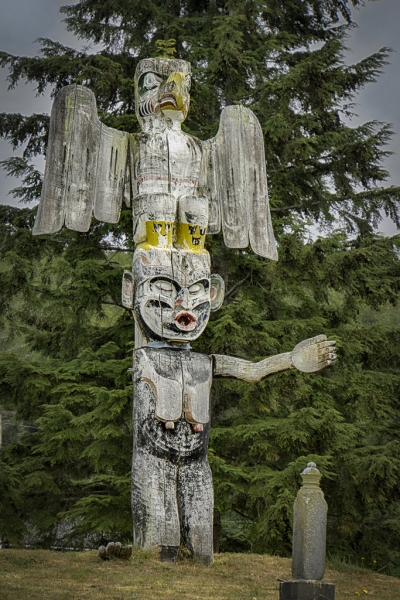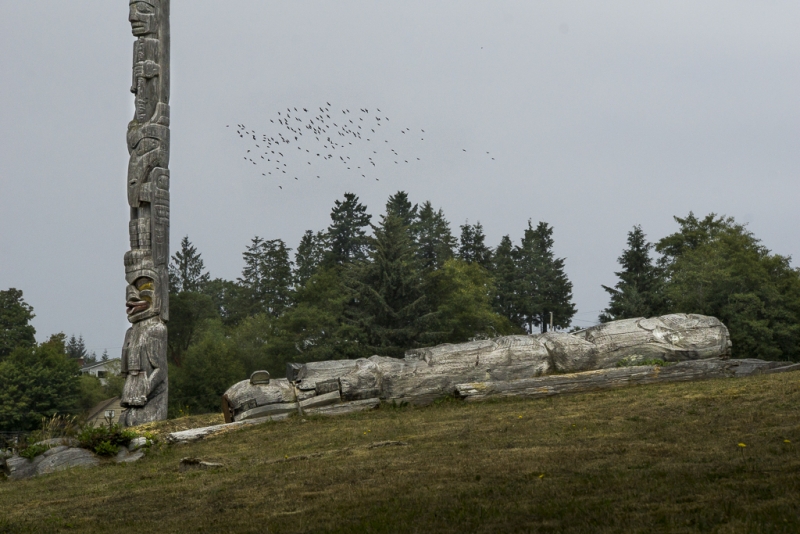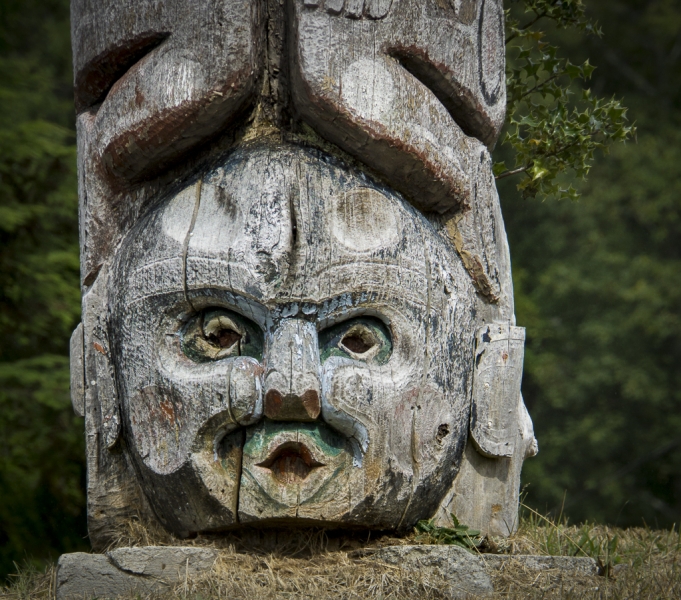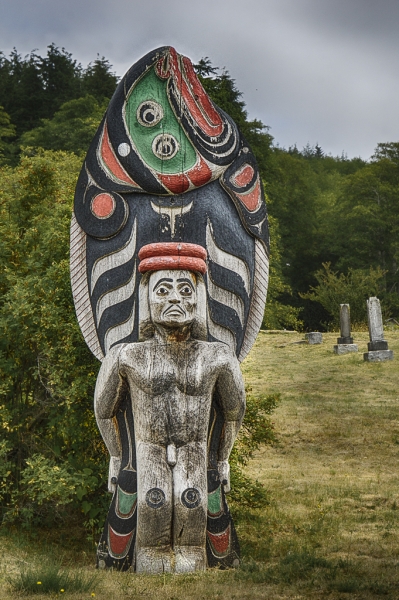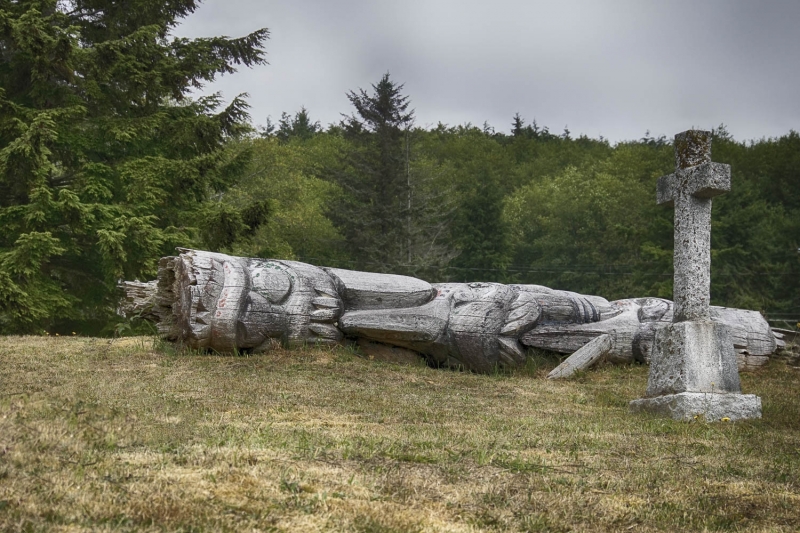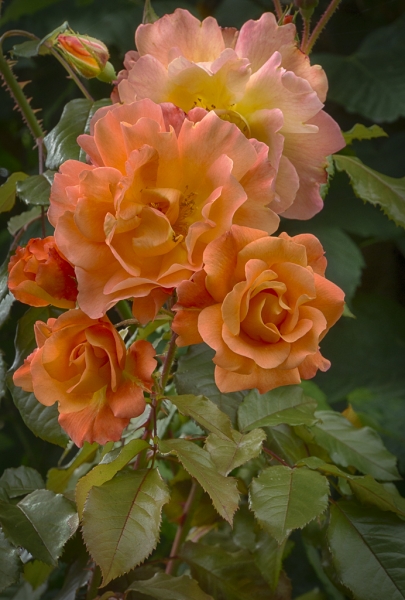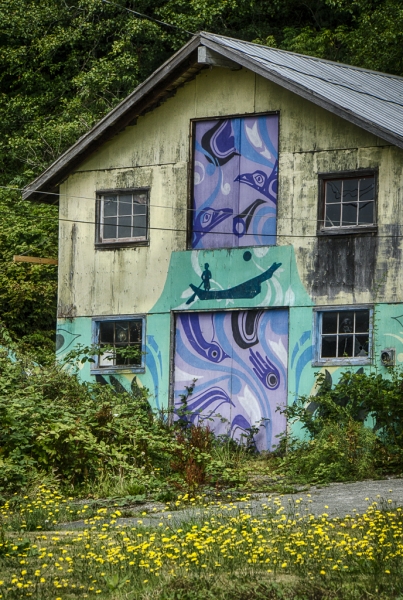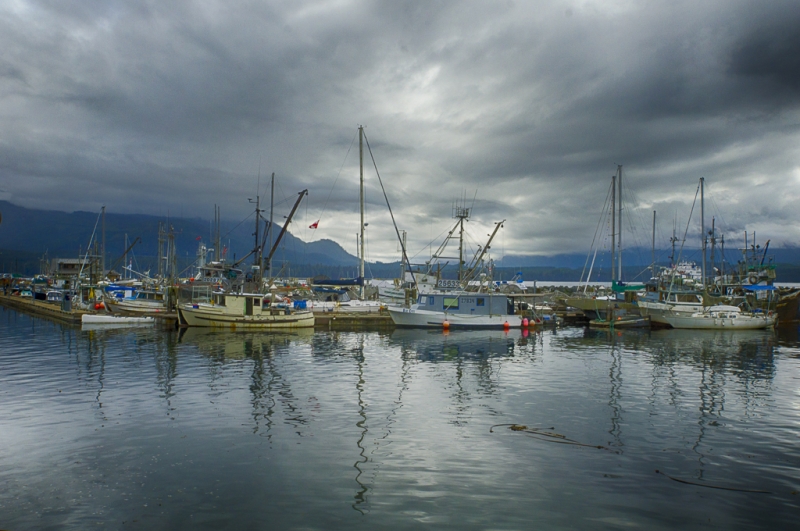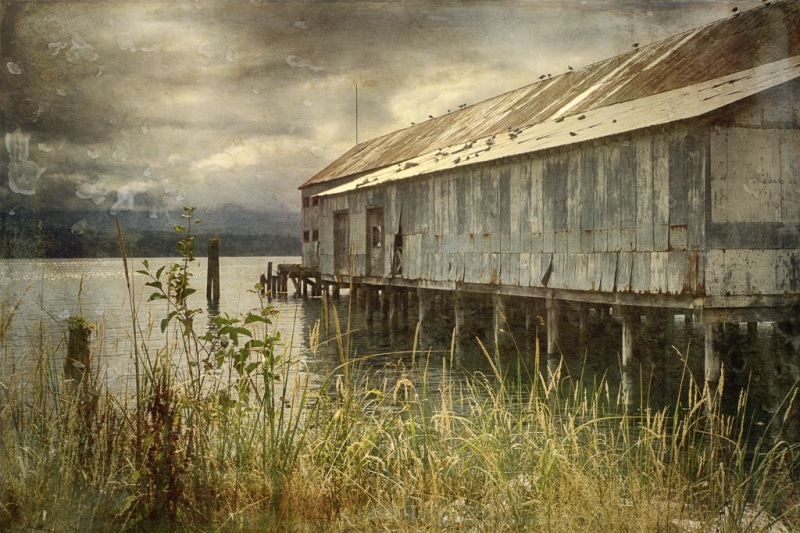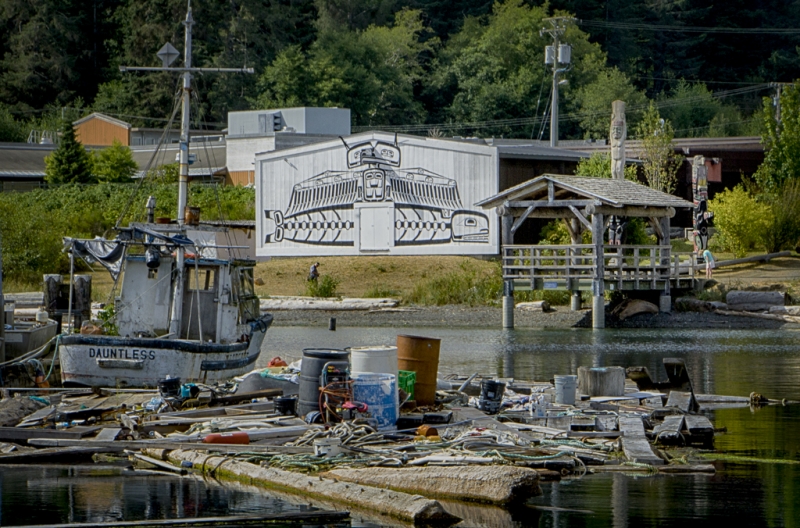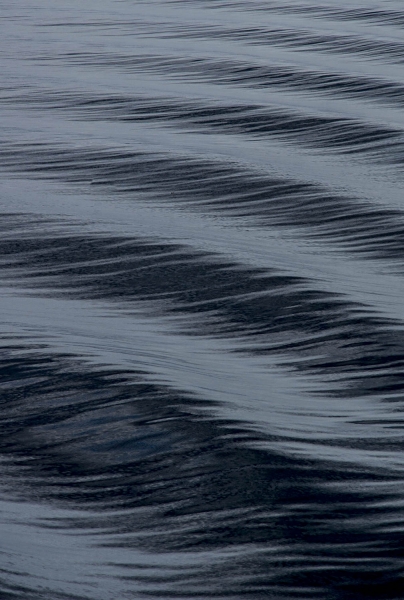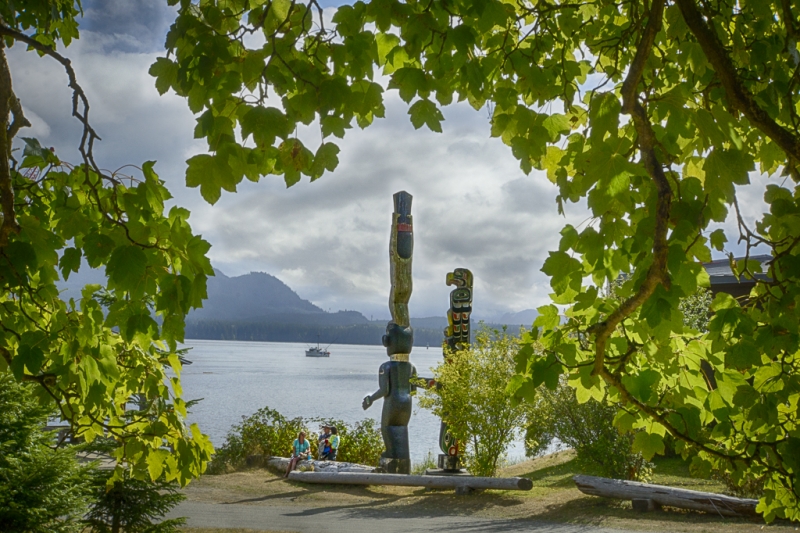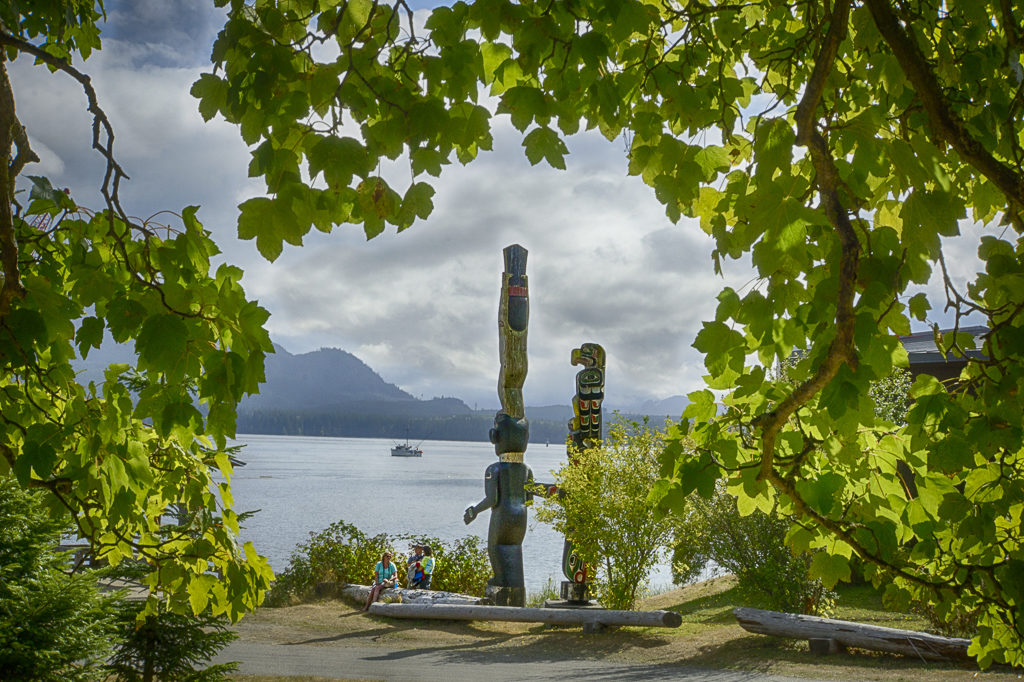 We took a road trip to Port McNeill and then a ferry ride to Alert Bay and Cormorant Island, home of the Namgis, an Indigenous nation that is part of the Kwakwaka’wakw on northern Vancouver Island. Their main village is now on Cormorant Island adjacent to Alert Bay. This is where the fascinating U’Mista Cultural Centre is located, that has one of the finest collections of elaborately carved masks depicting the potlach ceremonies of the Kwakwaka’wakw.
We took a road trip to Port McNeill and then a ferry ride to Alert Bay and Cormorant Island, home of the Namgis, an Indigenous nation that is part of the Kwakwaka’wakw on northern Vancouver Island. Their main village is now on Cormorant Island adjacent to Alert Bay. This is where the fascinating U’Mista Cultural Centre is located, that has one of the finest collections of elaborately carved masks depicting the potlach ceremonies of the Kwakwaka’wakw.
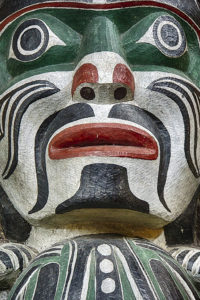 The Potlatch“When one’s heart is glad, he gives away gifts. It was given to us by our Creator, to be our way of doing things, to be our way of rejoicing, we who are Indian. The potlatch was given to us to be our way of expressing joy” – Agnes Alfred, Alert Bay, 1980
The Potlatch“When one’s heart is glad, he gives away gifts. It was given to us by our Creator, to be our way of doing things, to be our way of rejoicing, we who are Indian. The potlatch was given to us to be our way of expressing joy” – Agnes Alfred, Alert Bay, 1980
The potlatch ceremony marked important events in the lives of the Kwakwaka’wakw such as the naming of a child, a marriage, or mourning the dead. In addition to generous sharing of gifts, the ceremonies included dancing and the wearing of elaborate masks carved from cedar. The masks represented mythical eagles, bears, ravens and frogs, and were used in elaborate and theatrical dances that reflected the hosts’ genealogy and cultural wealth.
Missionaries who came to the island became increasingly frustrated over attempts to “civilize” the people, and in 1921 a law was passed to outlaw the potlatch ceremonies. Our Kwakwala guide told us that the common misunderstood belief was that canibalism was practiced at these gatherin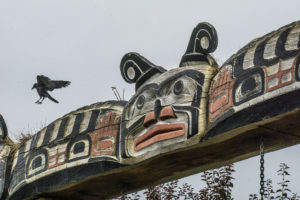 gs. The Kwakwaka’wakw people were forced to give up their gift-giving ceremonies or be jailed. The ceremonial regalia, including the ornate carved cedar masks were confiscated; some went to private collections, some went Canadian museums. For years, the potlatch continued in secret, and “underground” ceremonies were held. Although the anti-potlatch law was deleted in 1951, those who had lost their treasures had not forgotten their loss. Efforts to repatriate these objects began, and many of them have been returned and are now on display at the U’mista Centre.
gs. The Kwakwaka’wakw people were forced to give up their gift-giving ceremonies or be jailed. The ceremonial regalia, including the ornate carved cedar masks were confiscated; some went to private collections, some went Canadian museums. For years, the potlatch continued in secret, and “underground” ceremonies were held. Although the anti-potlatch law was deleted in 1951, those who had lost their treasures had not forgotten their loss. Efforts to repatriate these objects began, and many of them have been returned and are now on display at the U’mista Centre.
The meaning of U’mista In earlier days, people were sometimes taken captive by raiding parties. When they returned to their homes, either through payment of ransom or by retaliatory raid, they were said to have “u’mista”. the return of our treasures from distant museums is a form of u’mista. – U’mista Cultural Centre
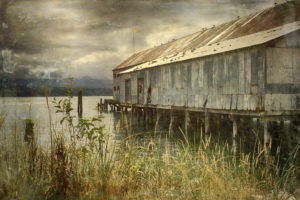 We enjoyed a walk through the town of Alert Bay and stopped to see the totem poles at the ‘Namgis Burial Grounds. Then back at the Cultural Centre, we were treated to a delicious feast prepared by the Kwakwala that included fresh seafood caught earlier that day from their fishing boat, the Western Moon.
We enjoyed a walk through the town of Alert Bay and stopped to see the totem poles at the ‘Namgis Burial Grounds. Then back at the Cultural Centre, we were treated to a delicious feast prepared by the Kwakwala that included fresh seafood caught earlier that day from their fishing boat, the Western Moon.
Click on first photo below to enlarge and see caption, then click right arrow on keyboard to scroll through the gallery.
Some expanded info on the Potlatch ceremony, totem poles, and traditions of the Kwakwaka’wakw are on a blog post.
On to Telegraph Cove and Whale Watching.
Back to British Columbia.
Go to other Destinations.

